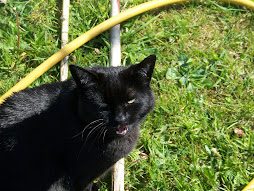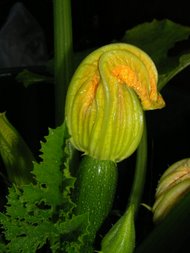Make Your Own Strawberry Planter Part 2
Some further ideas and more detail, due to lots of interest:
The structure of a strawberry planter is basic – it’s a container with holes in the sides as well as room to plant at least a few plants in the top. I had a look around the shed and found I already had a container that was perfect for the job. It was a pop-up bin made out of (plastic) tarpaulin with metal supports. I had bought two of them in a pack for a pound in a sale. I’ve since seen them for sale in bargain shops at two to three pounds each or two for a fiver. As long as you can cut holes in the sides without too much effort any type of container will do. Many types of plastic bin can be cut with a Stanley knife and a hacksaw, or a wooden barrel or planter is fine if you are handy with a drill and a jig saw (drill a few holes next to each other, then you can use the jig saw to cut the rest.) If you like a project, make the planter from old palette wood. You could even build a brick or stone one (like a barbeque but leave holes in the sides as you build up.)
Make the holes about three inches in diameter and space them six to eight inches apart in all directions. Make a couple of small drainage holes around the base so it doesn’t get waterlogged (if you live in the UK!)
So once you have got a container with holes in the sides, it’s time to fill it. There’s no need to buy large quantities of compost for this – you can use soil as long as you add some extra nutrients to it (strawberries are hungry plants).
Aim to end up with a fine crumbly mixture to fill the bin. If your garden soil is light and dusty, you’ll need to add something nutritious like manure or well rotted compost. If you’re using dried chicken manure, take care not to overdo it, a few generous handfuls will be plenty. Or collect some horse or cow manure from a nearby farm, it’s usually free. If you do this, try to get some that’s been standing a while, rather than fresh, as it will break down into the soil quicker, plus fresh manure will kill the worms in the soil if the horses or cattle have been wormed recently.
If your soil is heavy and lumpy, you need something to break it up a bit. Sand is a good quick fix, and calcified seaweed works well too. You can still add a bit of manure or compost, but go easy on it, the soil will already be quite rich.
So start filling your container and plant the sides as the soil level rises – it’s easier to put the plants in through the inside of the holes and then add more soil to fill. Finish up with the plants on the top, remembering to space them so they have room to grow. Finally water the plants (not too much), make yourself a cuppa and sit back and admire your creation!







5 comments:
Thanks a lot. I'm making one out of an old compost bin. (I've got a new bigger bin). I wasn't sure about spacing and hole sizes etc. I've also made a cage to keep the birds off with recycled timber and netting. Many thanks Sue
What a great idea - you've started me thinking about an old compost bin I've got in the garden. Funnily enough I was just looking at it this morning and wondering what to do with it. Your comment has started me thinking that it would make a fab potato planter. Watch this space!
And thanx for stopping by!
Post a Comment